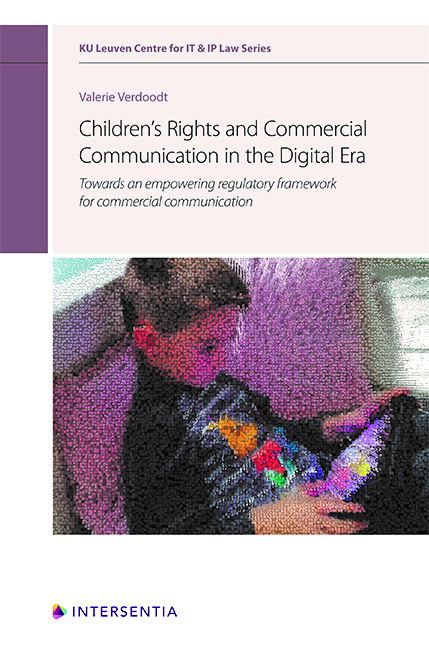 Children's Rights and Commercial Communication in the Digital Era
Children's Rights and Commercial Communication in the Digital Era Book contents
- Frontmatter
- Preface
- Contents
- Abbreviations
- Introduction
- PART I CHILDREN'S RIGHTS AND ADVERTISING LITERACY IN THE DIGITAL ERA
- PART II ASSESSMENT OF THE REGULATORY FRAMEWORK FOR COMMERCIAL COMMUNICATION IN LIGHT OF CHILDREN'S RIGHTS
- PART III ASSESSMENT OF NATIONAL ARIS IN THE AREA OF COMMERCIAL COMMUNICATION
- CONCLUDING REMARKS AND RECOMMENDATIONS FOR THE FUTURE
- Bibliography
- Miscellaneous Endmatter
Conclusion - Gaps and Overlaps in the Current Regulatory Framework for Commercial Communication Aimed at Children
Published online by Cambridge University Press: 23 July 2020
- Frontmatter
- Preface
- Contents
- Abbreviations
- Introduction
- PART I CHILDREN'S RIGHTS AND ADVERTISING LITERACY IN THE DIGITAL ERA
- PART II ASSESSMENT OF THE REGULATORY FRAMEWORK FOR COMMERCIAL COMMUNICATION IN LIGHT OF CHILDREN'S RIGHTS
- PART III ASSESSMENT OF NATIONAL ARIS IN THE AREA OF COMMERCIAL COMMUNICATION
- CONCLUDING REMARKS AND RECOMMENDATIONS FOR THE FUTURE
- Bibliography
- Miscellaneous Endmatter
Summary
ASSESSMENT OF THE REGULATORY FRAMEWORK FOR COMMERCIAL COMMUNICATION IN LIGHT OF CHILDREN'S RIGHTS. From the assessment, it can be concluded that at the EU level there are several legislative and self-regulatory initiatives imposing a myriad of obligations on advertisers first and foremost with regard to the identification of commercial communications, but also with regard to the content of the commercial message or the use of personal data for advertising purposes. However, the multitude of rules and obligations does not mean that, automatically, the level of protection and empowerment of children is high. Indeed, in the first part of this book, it was argued that the emerging trends in the area of commercial communication create difficulties for children to make carefully considered and critical commercial decisions or decisions concerning their privacy and personal data. This finding was confirmed in the second part of the book, and more specifically in the assessment of the persuasive tactics used in each of the three use cases and the impact thereof on children's advertising literacy. Furthermore, it was found that the advertising formats discussed affect several children's rights, such as their rights to development, privacy, protection against economic exploitation and freedom of thought. In this regard, the current regulatory framework provides specific protections for children across different regulatory instruments related to their autonomy and commercial decision-making, such as inter alia the principle of identification, information requirements and the reliance on (parental) consent as one of the main grounds legitimising the processing of children's personal data. However, the effectiveness of these advertising formats calls the existing protections and their enforcement into question. From the above mapping and evaluation it can be concluded that there are a number of gaps in the current regulatory framework for commercial communication aimed children.
Problems caused by the fragmentation of the regulatory framework
From the evaluation, a first general finding is that the fragmented regulatory framework leads to confusion among the different stakeholders involved. Both the legislative and self-regulatory principles are often formulated in a general or abstract manner (“commercial communications must be recognisable as such” or “marketing communications should not be intended to primarily appeal to minors”), and guidelines for the implementation in practice thereof are oft en lacking.
- Type
- Chapter
- Information
- Children's Rights and Commercial Communication in the Digital EraTowards an Empowering Regulatory Framework for Commercial Communication, pp. 233 - 236Publisher: IntersentiaPrint publication year: 2020


